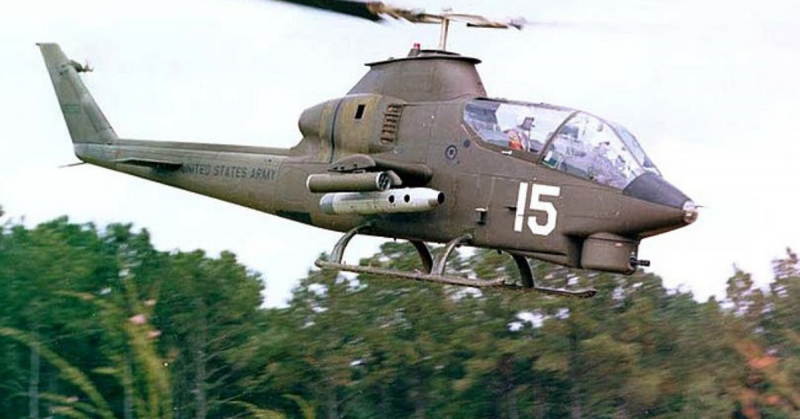Two distances that appear the same in a flat tactical map may be very different when moving infantry divisions over difficult or treacherous terrain like swamps, jungles, forests and hills–such terrain hinders movement and speed enormously, and can be the determining factor in losing or winning any operation. Vietnam is composed mostly of that treacherous terrain, and its implacable hostility posed a problem for vehicles so big that a new concept was born.
The idea was to form an infantry unit that had integrated air mobility. In 1963, the 11th Air Assault was called to field test that concept–the unit had to function like any other light infantry unit, but with helicopters replacing their wheeled and tracked vehicles.
The “air vehicles” would not just supplement the unit, but rather become its backbone. For more than two years, all aspects of this theory were refined and field tested in several war games, and by June 1965 a permanent unit was organized: the 1st Cavalry Division Airmobile, or “1st Aircav.”
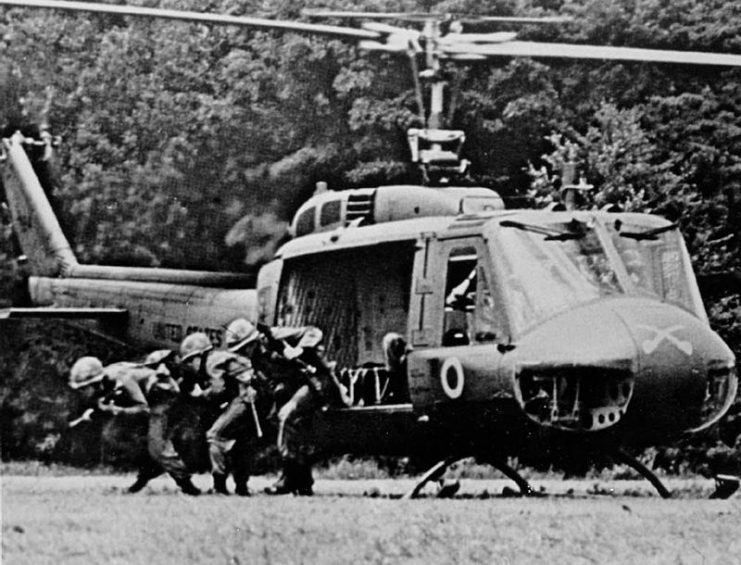
In Vietnam, the 1st Aircav set up camp in a place called An Khe, northeast of Saigon. They cleared several acres of terrain, mostly using handheld tools since construction machines were too heavy to transport, and improvised an airfield and heliport with several helipads, which they affectionately named “The Golf Course” due to its varying elevations and grass heights.
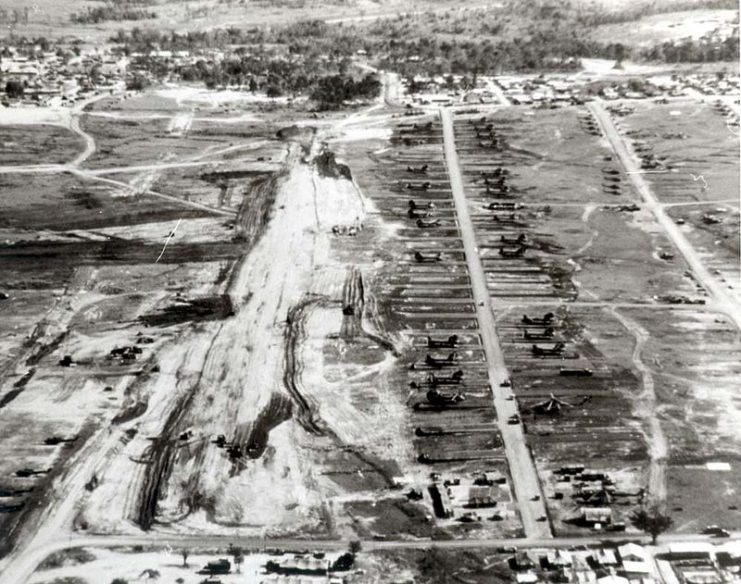
The 1st Aircav consisted of maneuver battalions, artillery battalions, the main aircav squad, a logistics squad, and even its own aviation group. Not surprisingly, it was able to act as a self-sufficient army. They even ferried their own supplies to and from the base and headquarters, and they had a CH-47 Chinook battalion that could also ferry many of the foot battalions quickly into and out of strategic zones, along with their artillery pieces and ammunition.
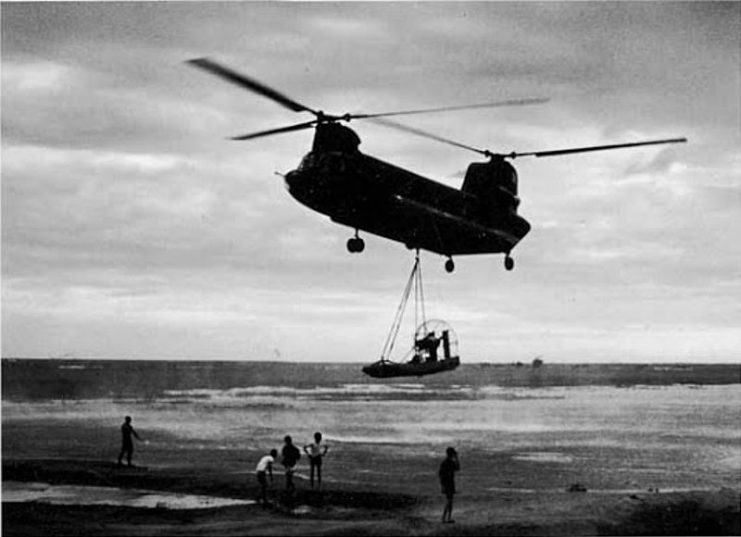
Drops into hot zones, however, were made by UH-1H Hueys. In any mission, a vital asset to every helicopter pilot was his door gunner–every chopper had at least one of them, and never went out without one. Door gunners were crucial for defending the aircraft from the sides while it was in a hovering position, its most vulnerable stance.
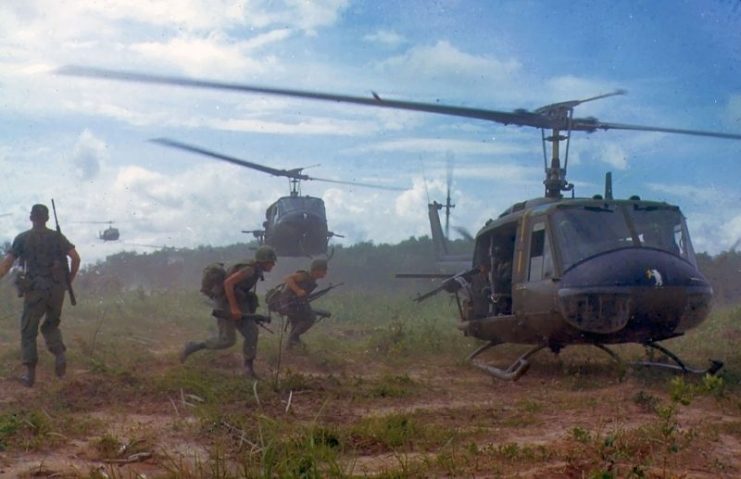
The 1st Aircav had some conventional artillery and rocket artillery capability of its own, with the added bonus that they could field any artillery piece anywhere almost instantly, but the most powerful supporting force available to them was the Air Rocket Artillery (ARA) battalion.
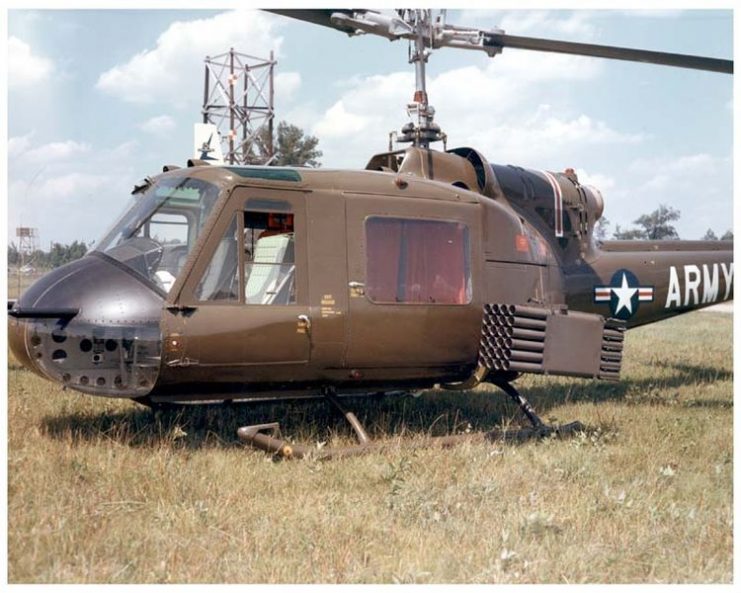
Any field commander in the division had the ability to call for a helicopter strike by the ARA, just as they would call an artillery strike, with the added benefit that the ARA’s supporting range was much greater than the coverage any artillery piece could provide. Fixed artillery doesn’t move once deployed, but the range of a helistrike is the range of the helicopter itself.
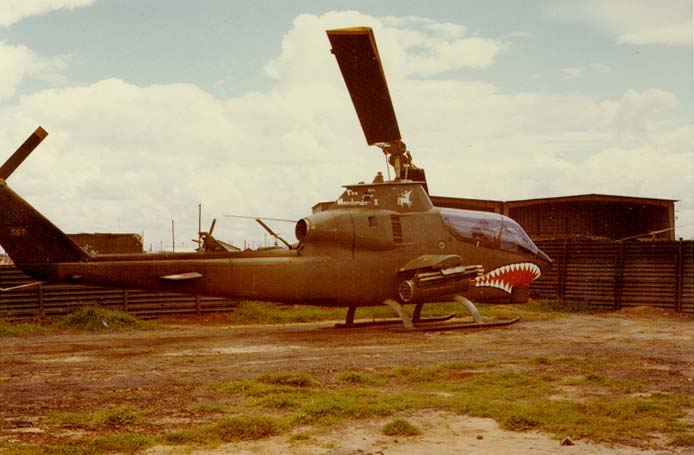
The versatility the division had was staggering and its mobility unparalleled, since it was not bound by any obstacles in the terrain. They could perform almost any mission and the troops always arrived to the combat zone rested and fresh, and could advance with the confidence that air and artillery support was just one step behind them. They also knew they would never be cut off from being resupplied.
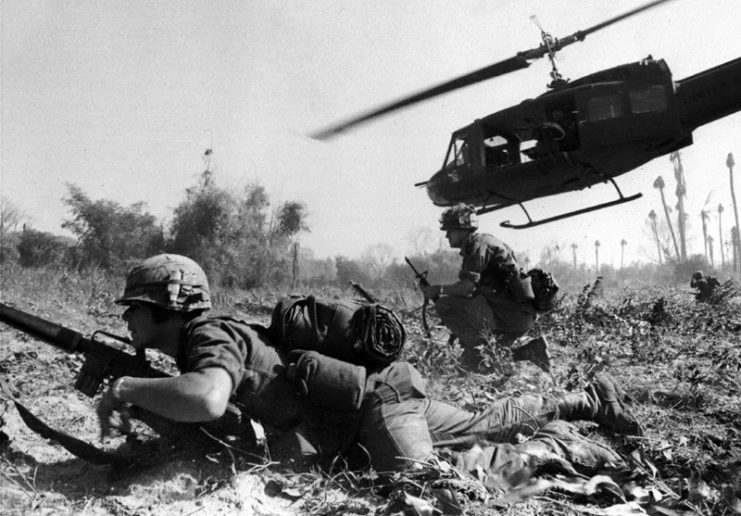
Their missions included but were not limited to: search and rescue, search and destroy, combat air assault, fire support, medical evacuation (medivac), reconnaissance, resupply, artillery transport to and from front lines, shadowing the enemy, and so on.
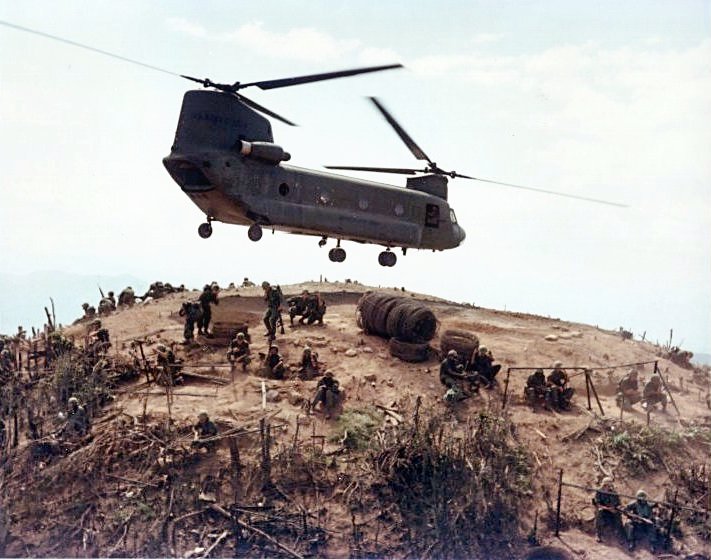
The division used ladders and ropes to drop logistical teams where no landing zones existed. Engineers on the ground would open a clearing of level terrain and improvise a landing zone, while scout choppers kept them safe from enemy ambushes and the ARA was ready to provide covering fire if the enemy slipped past the scouts.
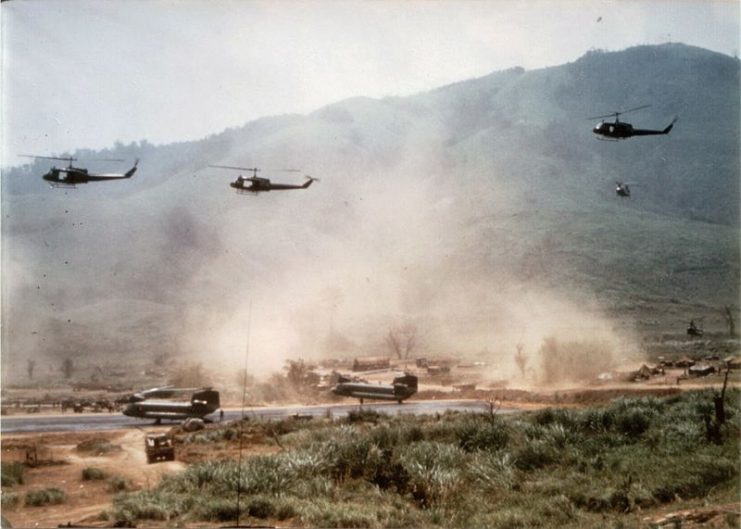
Contrary to popular belief, the Air Cavalry’s mobility was not impaired during bad weather or during the night. In Vietnam, bad weather was spotty and could be overcome by sufficient planning, even if it meant landing somewhat off target, and most choppers were fully equipped to operate during the night as well. But having a whole division so mobile that it could spread over hundreds of miles on any given day was not without challenges.
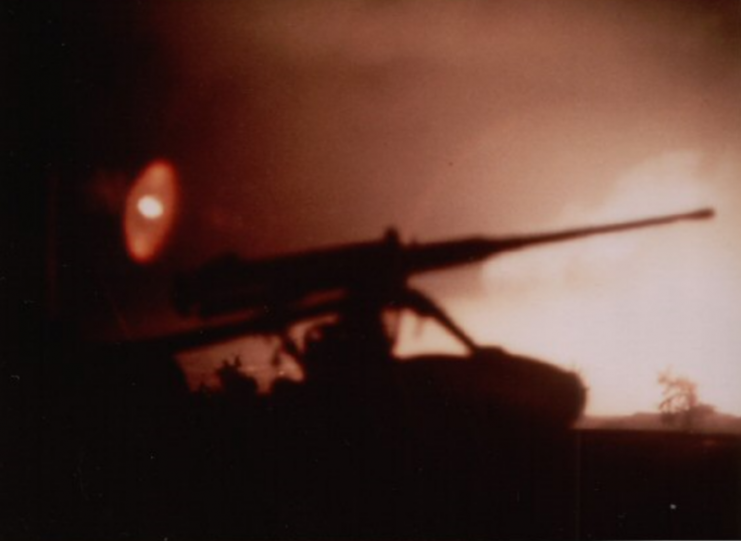
Communication was the key to efficiency, so unlike other divisions, the 1st Aircav had a special, more portable, and more potent version of the radio equipment every other unit had in their vehicles. Bell UH-1D Iroquois helicopters were outfitted with a variety of lightweight communication equipment in order to serve as mobile short range command and control liaison vehicles, and a CV2 Caribou was outfitted with long range communication equipment and used as a strategic command and control center.
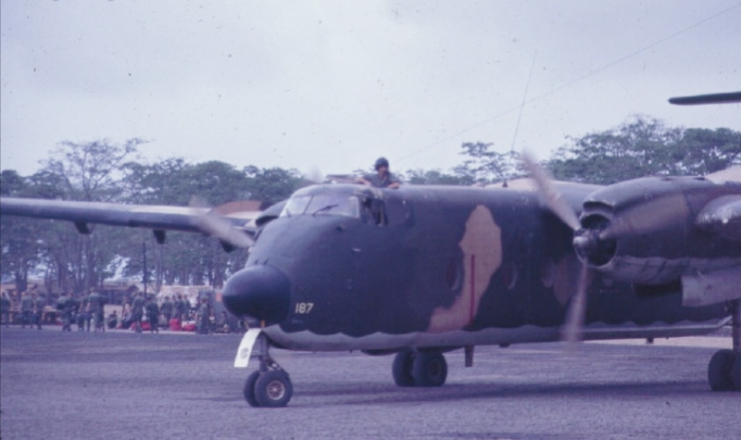
The Caribou could also patch comms to allow conference calls among any and all commanding officers. This was devised so that every vehicle in the division could communicate at all times.
In case of jamming, or any other logistical impairments to communication, a Sikorsky CH-54 Tarhe “sky-crane” helicopter–a massive aircraft designed to lift equipment that could not be fitted inside a cargo plane–would transport a big metal container full of radio equipment that could be set up and used as a mobile headquarters near the field.
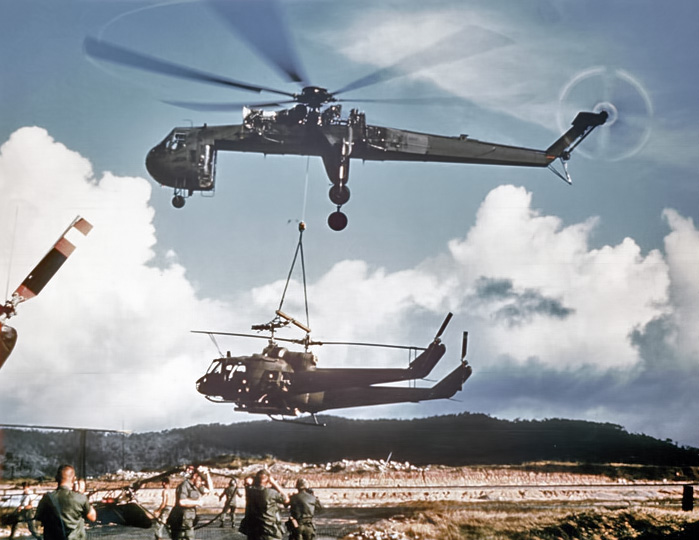
A typical Aircav mission structure would be as follows:
First, team of scout helicopters, such as the Bell H-13 Sioux, would scout and secure landing zones for artillery pieces around suspected hot zones. Then CH-47s would ferry the artillery pieces along with their crews and ammunition to those landing zones. Next, CH-47s carrying infantry would make drops near those hot zones.
Drops at the hot zones themselves would be handled by UH-1s, with gunships guarding them and laying down suppressive fire at the landing zone inside the hot zone. UH-1s were also tasked with carrying supplies to the troops and doing medivacs. Meanwhile, the ARA flight stood close by, ready to provide supporting fire during the whole operation.
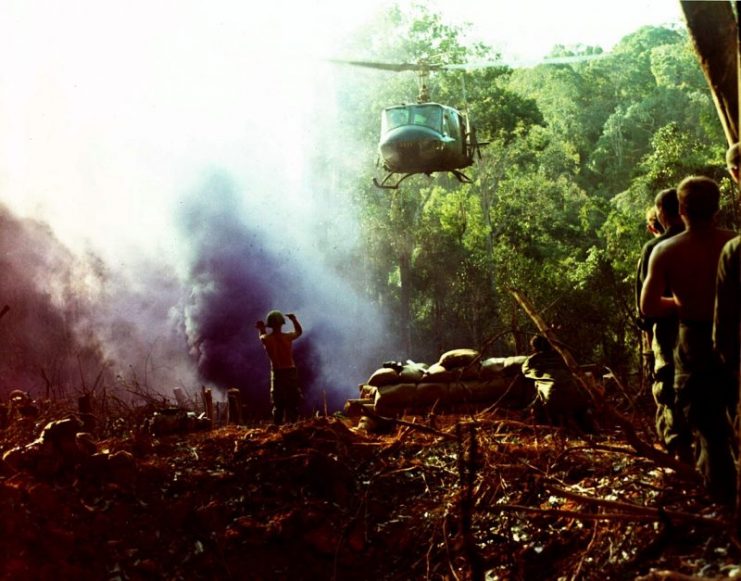
Read another story from us: The ‘Huey’ – Legendary Workhorse of Vietnam War in 30 Pictures
The 1st Aircav would serve in the Vietnam War until the very end, thus causing the war to be nicknamed “The Helicopter War” and becoming the proof of concept that in modern wars, mobility would be paramount. However, this was achieved with much sacrifice because a great number of helicopters were shot down, reminding commanders that no unit is above getting ambushed.
